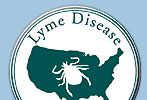

 |
 |
|
HOME | ABOUT US | AFFILIATES | CONTACT US | Doctor Referral | DONATIONS | LEGISLATION | ORDER BROCHURES |
|
|
Lyme Disease Association, Inc. |
|
|
Lyme Organizations: New IDSA Guidelines Panel, Unbalanced & Biased Greenwich, CT, January 28, 2009 - Patient groups voiced concern and disappointment about the new Infectious Diseases Society of America (IDSA) Lyme disease guidelines’ panel, which excludes physicians who treat patients with chronic Lyme disease. Last May, the Connecticut Attorney General found the IDSA Lyme disease treatment guidelines’ panel had conflicts of interest, engaged in exclusionary conduct, and suppressed scientific evidence. The investigation resulted in a settlement forcing the IDSA to reconstitute a balanced panel free of conflicts of interest under the oversight of an ombudsman to monitor conflicts of interest. No input from patients or treating physicians was permitted in selection. “This situation is déja vu all over again,” said national Lyme Disease Association president Pat Smith about the newly created guidelines’ panel. “All Lyme disease treating physicians who applied for a seat were denied, based on having a “conflict” if they made over $10,000 treating Lyme disease. They have confused helping patients get better with ‘real’ competing conflicts such as interests in testing and vaccines, and relationships with insurers−a profile found in the original panel. Physicians who treat understand what makes patients well.” Attorney Lorraine Johnson of the California Lyme Disease Association points out “The problem is that guidelines conclusions generally reflect panel composition. That is why it is critical that a panel be balanced and include different points of view. Excluding the point of view of physicians who treat chronic Lyme disease makes no sense and biases this panel.” The current IDSA guidelines recommend against treating Lyme disease more than a few weeks, against using specific types of antibiotics, against alternative treatments and even supplements. The guidelines are so restrictive that physicians are not permitted to use clinical judgment in diagnosing or treating Lyme patients. The new panel will review controversial recommendations in the guidelines to determine whether there is sufficient scientific support for the recommendation. According to Diane Blanchard, Co-President of Time for Lyme in Connecticut, “Treating physicians must be allowed to make clinical judgments about their patients’ conditions due to the complexity of tick-borne diseases, and there are a number of physicians out there nationwide who are knowledgeable enough to recognize the effects of coinfections on diagnosis and treatment. Some have been treating for over 10-20 years and have tens of thousands of hours of experience seeing patients; yet, these physicians were not selected.” US Congressman Christopher Smith (NJ) co-chair of the House Lyme Disease Caucus, told the patient groups “The Settlement Agreement of the IDSA requires a balanced panel with a variety of experiences, including clinical experience in treating patients with Lyme disease. I share concerns raised about exclusion of physicians who treat persisting Lyme and the composition of the panel. I know I am joined by colleagues in Congress in the hope and expectation that the reassessment of the Lyme disease guidelines will be conducted with the highest levels of integrity and expertise. Nothing less will protect the rights and welfare of patients. We will continue to monitor this ongoing process.” The three groups are still hopeful, however, that the panel will take their responsibility seriously, since they have within their grasp the chance to improve the diagnosis and treatment for Lyme patients everywhere. Patients are counting on them to ensure that the weight of the science is evaluated fairly, which would be reflected in new standards that provide help for thousands of children and their families. The groups feel patients should be provided with treatment options, including the use of long term antibiotics, to fight the disease, which has a disability equivalent to that of congestive heart failure. As in other areas where science is emerging, patients should have choices, and the exercise of clinical judgment by treating physicians should be encouraged. Studies of chronic Lyme disease show a failure rate of 26% to 50%, using the short-term antibiotic approaches currently advocated by IDSA. ABOUT: The national Lyme Disease Association, (LymeDiseaseAssociation.org), the California Lyme Disease Association (lymedisease.org), and Time for Lyme (timeforlyme.org) are non-profit organizations that were founded by individuals who had personal experience with Lyme disease, in order to address the lack of education and support services available for this newly emerging infection.
Last Modified: April 28, 2009 |
Lyme Disease Association, New Jersey, Copyright 2008 - All Rights Reserved
|
|
HOME PAGE | ABOUT US | CODE OF ETHICS | CONTACT US | CREDENTIALS | DISCLAIMER & PRIVACY | MAKE A DONATION |